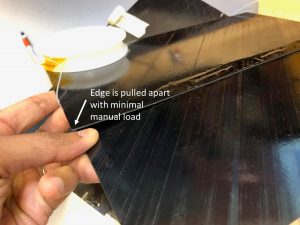Embedding Fiber Optic Sensors for Active Feedback Control in Thermoplastic Welding
Luna engineers recently participated in the Toray Advanced Composites Induction Welding Workshop at the McNair Center. The workshop connected suppliers, researchers and innovators of thermoplastic welding in the aerospace industry, which joins composite materials via fusion bonding or welding.
Temperature control is a challenge when employing thermoplastic welding. The appropriate temperature at the weld surface must be achieved with sufficient force to join the two components. Currently, the preferred practice is to set up an induction weld process where the induction coil is traveling at a constant fixed travel rate.

However, this can result in the middle of the welded section reaching higher temperatures and staying at high temperatures for a much longer time than the edges. This can create a risk of material breakdown and large residual strains that warp the final part. In addition, the edges can pull apart, resulting in an unsuccessful weld.
Luna has been researching active feedback control in thermoplastic welding. Fiber sensors can be directly embedded within the welded joint to obtain in-situ temperature measurements along the length of the joint throughout the entire welding process.
Using data from the embedded fiber optic sensors, a feedback control loop can be implemented. Distributed fiber optic sensors monitor the temperature profile and provide feedback to the welding operator. This research uncovered that there is a need to hold the welding coil longer at the edges compared to the middle of the panel.
Active feedback control has been shown to decrease processing time by 50 percent from the typical constant travel rate setup, achieving a solid welded joint with just a small set of tests.
Learn more about applications of Luna's fiber optic temperature sensing technology and its use in thermoplastic welding.